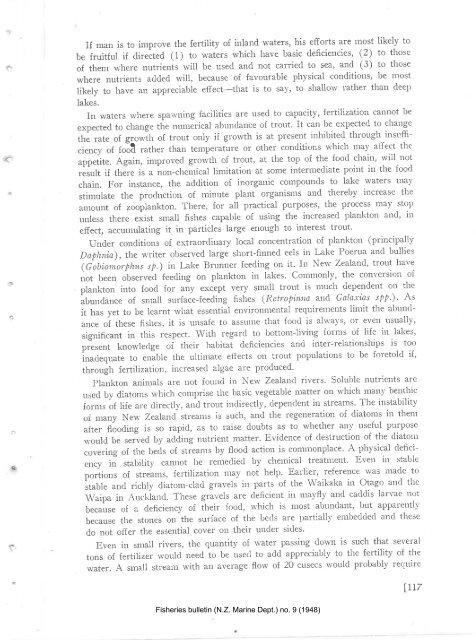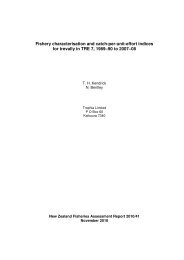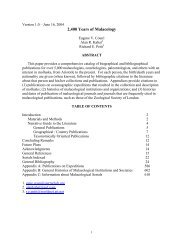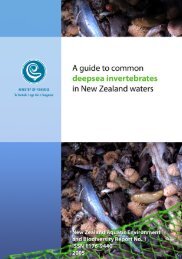N.Z. MARINE DEPARTMENT-FISHERIE,S BULLETIN No. .į
N.Z. MARINE DEPARTMENT-FISHERIE,S BULLETIN No. .į
N.Z. MARINE DEPARTMENT-FISHERIE,S BULLETIN No. .į
Create successful ePaper yourself
Turn your PDF publications into a flip-book with our unique Google optimized e-Paper software.
If man is to improve the fertility of inland waters, his efiorts are tnost likely to<br />
be fruitful if clirected (1) to watefs which have basic deficiencies, (2) to those<br />
of the'r where nutrients w-ill be usecl ancl not carried to sea, and (3) to those<br />
where nutrients aclclecl will, becattse of favourable physical conditions, be most<br />
likely to have an appreciable effect-that is to say, to sl.rallow rather than deep<br />
lakes.<br />
In waters where sparvnilrg facilities are usecl to capacity, fertilization car-rnot be<br />
expectecl to change the r-rumerical abunclance of trout. It can lle expected to chaflge<br />
thå rate of srowtir of trout only if growth is at present inl-ribited through insufÊ-<br />
ciency of foãã rather than temperature or otirer conditions which rnay affect the<br />
Again, i^rprovecl gror'r'tlt of trout, at the top of the foocl chai'' will not<br />
"pp.iit".<br />
result if there is a non-chernical limitation at some intermecliate point in the food<br />
chain. For instance, the adclition of inorganic compounds to lake waters may<br />
stimulate the procluction of minute plant organisms ancl thereby increase tire<br />
¿rrnount of zooplankton. There, for all practical purposes, the process may stop<br />
unless there exist small frshes capable of usirlg the increasecl plankton an







